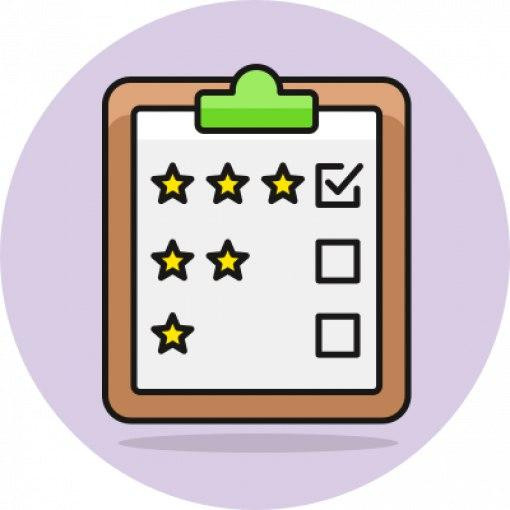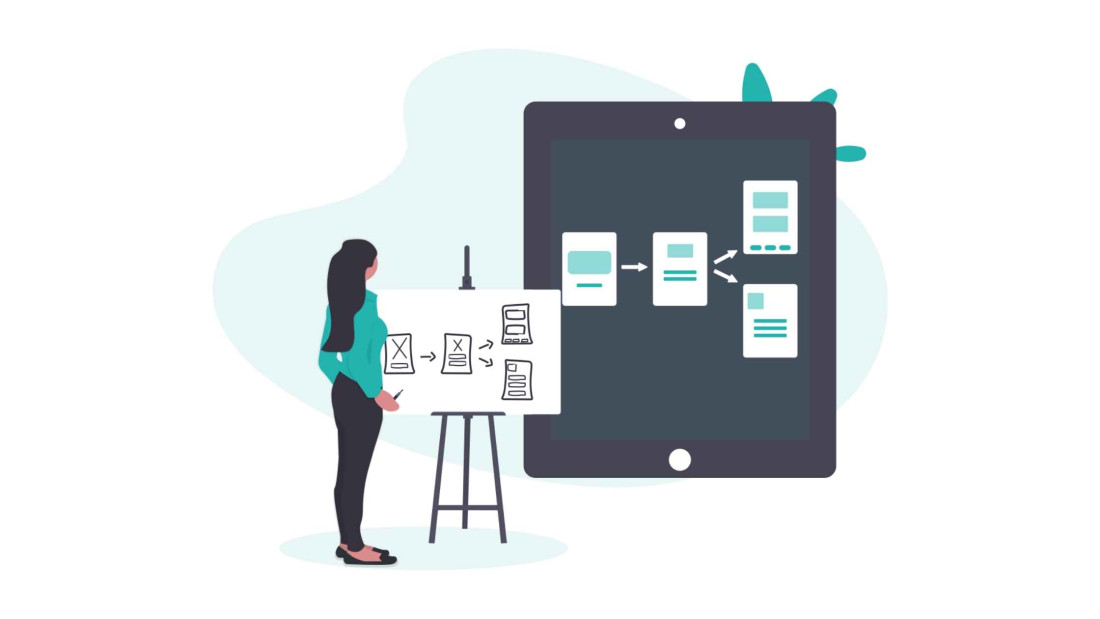With ever-changing markets and customer demands, product discovery is more important now than ever before. As a key stage in the product development process, an effective discovery strategy will help you maximize R&D budgets while meeting and exceeding the needs of your target audience.
Here’s how to make the product discovery process work for you to stay focused on customer needs, prioritize better, and increase product adoption rates.
What is product discovery?
Put simply, product discovery is the process of understanding customers on a deeper level in order to develop products that suit their needs.
Product discovery helps teams to uncover what problems their target audience might be facing. Since a successful product solves a specific problem, this process is vital for your product growth and overall product success.
Without a tailored end goal in mind, you risk wasting valuable resources building products that don’t effectively meet the needs of their users. On the other hand, having a solid product discovery in place makes it easier to direct focus on developing features and products that will generate results.
How product discovery can make you more customer-centric
By the very nature of an effective product discovery process, your business will become more customer-centric. At its core, product discovery is about understanding users, knowing what drives them, and listening to feedback.
This increased focus has a knock-on effect on satisfaction levels and often profits—customers who feel valued by a company that understands and meets their needs tend to stay loyal. In fact, 89% of customers evaluate the experience as a key factor in driving loyalty and retention. To become more customer-centric, there are three things you need to do.
1. Keep your ideal user in mind
Before entering into the discovery stage, it’s important to have a clear picture of your ideal user(s) in mind as it can (and should) influence the decision-making process.
Remember, you can’t please everyone so exclude anyone who doesn’t fall under the category specifics of your target audience. Allocating resources to people who may not be suitable for your product depletes the time and attention you can devote to your ideal users.
2. Empathize with your customers
Once you’ve got an idea of who your ideal customer is, it’s time to build empathy for them. At this stage, it is useful to draw up a user persona with a name, face, demographic and psychographic data, as it will help you to connect better on an emotional level.
Whether you’re targeting Alex or Customer X, you have to spend time understanding their needs, pain points, wants, desires, motivations, and future goals. Without this step, you won’t be able to develop product updates and new releases that add real value.
For example, updating your app logo from red to blue might make it look better, but if it doesn’t solve a specific problem for the customer then that money is better spent elsewhere — fancy design is only going to get you so far.
3. Learn all about customers needs and concerns
To be truly customer-centric you need to go further than just building empathy. Once you’ve nailed down customer pain points, it can help you understand why that’s an issue for them. Asking deeper questions will help.
For example:
What’s their typical day like?
In what context will they use your product?
How do they typically interact with similar products?
Have they tried any alternatives?
What are they struggling with?
What don’t they like doing?
Product discovery tools can be useful here. Reaching out to existing users to learn more about them via informal surveys and questionnaires will provide more accurate data than simply guessing — however informed you think that guess might be. If you have the time and resources to run a focus group, this could be done at this stage too.
Here, you could also benefit from using the Customer Needs Canvas developed by WRKSHP to uncover, evaluate, and segment different needs. This will help you make a distinction between customers’ real and latent needs to know where to put your focus next.

(Source)
How can product teams benefit from product discovery?
It’s not just customers that benefit from the product discovery stage, product teams gain enormous value from it, too.
Spending some time in this stage before jumping into idea development helps you to stay focused on customer needs, prioritize better, and increase product adoption rates.
Create products that cover customers needs
The job of your product team is to design, develop, and deliver products and features that cover the needs of your customers. So, understanding these needs is going to make your job a lot easier.
Being asked to develop an idea without an audience in mind is like being asked to write an essay without a title — too many possibilities lead to chronic decision paralysis and nothing will get done. Without a clear direction throughout the development process, each idea could end up on wild tangents that would get you nowhere.
Improve prioritization processes
Trying to decide between a seemingly never-ending list of potential product ideas is overwhelming. It’s even worse if there’s nothing to distinguish one idea from the next.
Having a checklist of requirements to mark each potential project against, improves the prioritization process and increases your chance of selecting the right idea (or ideas) to run. The only way to come up with a list of specific criteria is to understand your users — what’s going to create real value for them?
Create value for the company
What effect the decision will have on the users is certainly at the forefront of a product team’s mind (or at least it should be!). However, product discovery enables teams to create value for the business too — both in terms of reputation and actual sales.
A company that understands its users is more likely to have a more favorable reputation than one just churning out products with no regard to their relevance. Similarly, a company that puts out an innovative idea after an innovative idea is quickly going to gain a reputation as a market leader.
Creating products that meet an unserviced need might help you increase sales. In addition, an effective product discovery process can also create value for the company by ensuring that valuable resources aren’t wasted pursuing the wrong ideas.
All of this is only possible with a thorough understanding of the target audience.
Creating a roadmap with product discovery in mind
The product discovery phase should slip seamlessly into your existing product development strategy. Creating a roadmap helps to make sure the whole product team is on the same page and a shared understanding leads to better results.
Here’s how to create effective product roadmaps.
Gather information
We’ve already covered how important it is to have a clear idea of who you’re designing and innovating for. The very first stage in the product development journey is to bring together this information and map out the needs of your ideal customers.
Let’s say you’re offering a product that helps with user onboarding (sound familiar?). Why does your customer need this software? How will it benefit them? Essentially, what is their ‘WHY?’
It’s also a good idea to map out the direction of your company and specifically the product you’re looking to update/develop. Where do you see it going? What is the current product experience like? Are you looking to lead the industry or just maintain steady growth? Will you target new audiences in the future or do you have enough market exposure already?
Visualize your findings
As product discovery coach Teresa Torres explains in her article, using visuals to showcase your ideas helps you see them through a different lens.
The way she puts it:
“Drawing allows us to examine, interpret, and re-arrange our ideas. This continues in a virtuous cycle, where each iteration helps us to further evolve our ideas.”
- Teresa Torres, product discovery coach
Here are various maps you can create to externalize your product changes.
Individual maps
Before you gather the whole team for a group discussion, let everyone draw up their own map. This will give them time to tap into individual perspectives without interruption and allow the quieter team members space to contribute their ideas. The whole reason you’ve built a diverse team of product developers is to benefit from different perspectives — give them the time to shine through.
Shared maps
Once everyone has had time to create their maps, come together to create a shared map that brings all the successful elements of the individual maps into one shared vision. This will help you see the bigger picture and decide in which direction you should proceed.
Scope maps
Your roadmap doesn’t have to be restricted to just one path. Map out different scopes including the life of your customer, a typical day for a user, a specific experience, the typical customer journey through your product, and the ways you can support that journey behind the scenes. The possibilities are only limited by your imagination at this point.
Use inspiration, tech knowledge, and human knowledge
Industry trends, customer feedback, reliable customer reviews, theory-backed knowledge, professional expertise, and human behavioral patterns are all good sources of inspiration when deciding what steps to take next.
One issue that’s easy to fall prey to is innovation for innovation’s sake — not every new product release or update has to reinvent the wheel. New developments often lead to different solutions rather than better ones.
This is where continuous product discovery can be useful. For each new feature or product update you want to develop, make sure to get customer feedback first. That way, you can focus on solving specific problems to achieve the desired outcome and add real value for your users.
Here is a good example of a continuous discovery overview map, coming from Product Talk, a discovery-focused blog written by the abovementioned Teresa Torres.

(Source)

🎬 Webinar: Validating Product Roadmaps With Your Users
Learn how to validate new product ideas and solutions with user feedback in this webinar with Maze
Analyzing the results
Once you’re drowning in data, it’s time to put it to use. Whilst collecting the data is the hard part, analyzing it effectively is no mean feat. There are three main things to remember.
1. Be as objective as you can
Removing personal bias is crucial for analyzing results. Once you’ve spent the time understanding customers and drawing up maps, it’s time to put what you’ve learned into action. Throughout the process, you’ve likely come up with a checklist of criteria that the winning idea should have. Measure against this and allow your research to influence decisions, not personal opinion.
You’re designing and innovating for your customer, not yourself — it’s time to be objective.
2. Don’t overcomplicate it just for the sake of it
Just as innovation for innovation’s sake isn’t worthwhile, overcomplicating the whole process leads to unnecessary time and energy allocations. Don’t discount ideas because they’re “too simple”, sometimes the correct answers are staring you right in the face. Use the data you have available and trust that your product discovery process works.
3. Test your results
The only way to know if a product or idea is successful is to test it. Depending on your area, you don’t need to release a fully polished prototype every time. A working model that gives a real-life reflection can be enough for the testing phase.
There are multiple ways to test an idea but A/B testing has historically been the most effective. By releasing two versions of a product you can track in real-time the customer preferences and see which elements are working most effectively. Plus, you can highlight product changes to users and get real-time feedback with Chameleon and the product's seamless integrations.
Product discovery is a constant, not a temporary task
Customer needs change over time so product discovery is not a one-and-done process. If you want to stay on top of movements in your industry, keep customers happy, and maximize profits, you need to keep reevaluating your ideal customers and the products you’re offering them.
Specific solutions to specific problems
To increase the chances of success, new ideas should seek to solve a specific problem. If you’ve identified a pain point for your target audience, what solution can you come up with?
Rather than throwing out new features and hoping one will stick, by catering to problems you know to exist you have a higher chance of contributing something worthwhile for your audience which should, in turn, increase their satisfaction levels.
Get constant feedback
Encourage communication from your customers by making it easy to get in touch with you. This can be anything from holding focus groups and allowing reviews and testimonial submissions to having friendly and accessible customer service departments.
Don’t forget about viability, feasibility, usability, and ethical assumptions
When going through product development it’s important to consider how viable the idea is for the business. Can it be achieved with the budget and resources you have available and would the move fit with your brand’s reputation and ethical stance?
For example, a brand built on sustainable ethics suddenly partnering with one of the major oil companies because it cuts costs for their newest packaging development probably isn’t going to sit well with customers.
Keep listening
Once you’ve opened up communication channels with your target audience don’t let that valuable information go to waste. If customers are taking the time to get in touch, respond promptly. Show active listening and, if appropriate, release updates based on their feedback (assuming it’s a ‘we’, not a ‘me’ problem). Ultimately, a business is nothing without its customers and you're there to serve them. Don’t waste the opportunity to find out how to do it.
Gain valuable insights from the product discovery process
Once you understand the basics, product discovery is easy to integrate into your workflow. Remember, it’s a non-linear process that enables you to gain valuable insights from user feedback and a deeper understanding of your customers.
The more you learn about their needs and pain points, the better decisions you’ll be able to make about new features and updates. Make the discovery a constant throughout your product development and you’ll be able to solve specific problems and provide real value.
With Chameleon, you can make it even easier for users to quickly share their feedback by running relevant and contextual in-product surveys. Find out how it can help your business thrive.

Run product surveys with Chameleon
In-app Microsurveys allow you to capture important user feedback when it's most relevant






